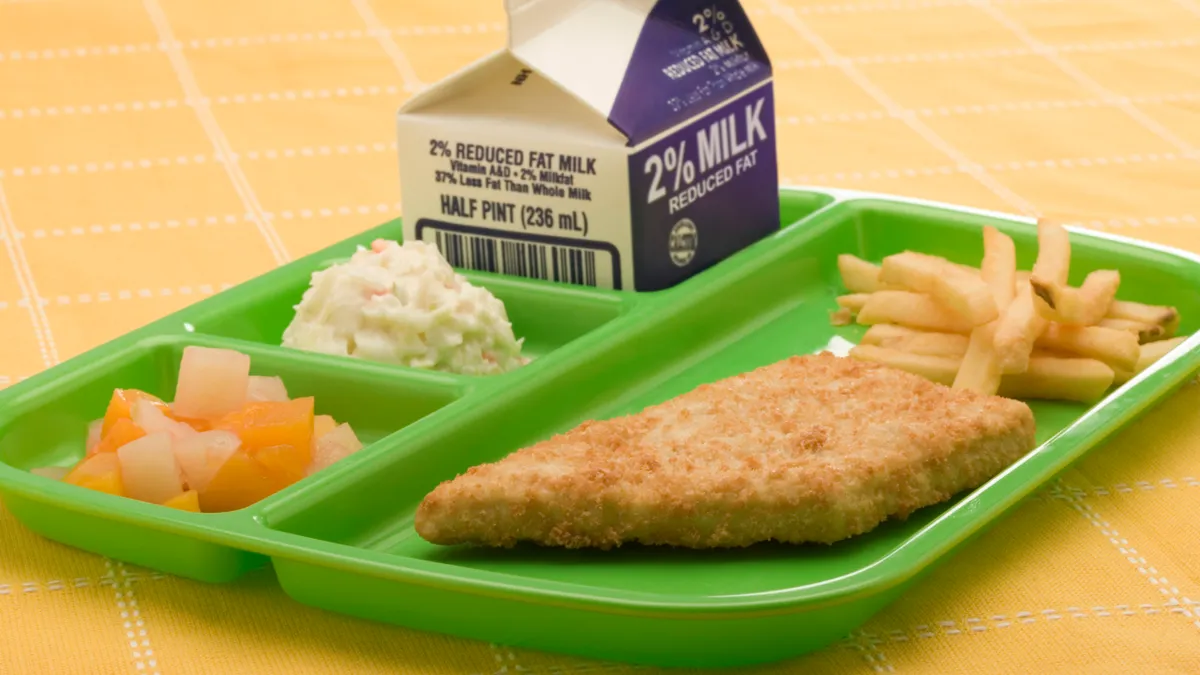Dive Brief:
-
Dietary guidelines suggest school-aged children should eat between 4 and 10 oz. of seafood per week. However, seafood makes up only between 1% and 2% of all animal proteins that the U.S. Department of Agriculture purchased for the National School Lunch Program, according to a report released Thursday by the Government Accountability Office.
-
The report found that the USDA purchased an average of 3.4 ounces of seafood per student per fiscal year between 2014 and 2019, which amounts to approximately three fish sticks or one can of tuna annually per student. That's much less compared to the almost 14 pounds of other proteins like beef (59 ounces), eggs (7.5 ounces), pork (14.5 ounces), and poultry (137.8 ounces) purchased on average per year per child. Those numbers represent about 43 chicken drumsticks, 21 beef patties, 12 slices of ham and four eggs per year.
-
States that incorporated the most seafood on average per student were mainly on the mid and upper East coast, including Maine, Massachusetts, Rhode Island, Delaware, and Maryland. Mississippi also purchased more seafood on average per student than most other states.
Dive Insight:
Multiple issues, including allergies, student preferences and cost, impacted states' and school food authorities' efforts to incorporate seafood into children's diets, the GAO report found. The USDA could be of more help to states and school food authorities by providing nutrition education, allergen and food safety training, and recipes, the report said. The agency should develop a plan to increase its assistance, GAO said.
Children participating in the school lunch program, which provides meals for students from low-income households, are more likely to identify as Black or Hispanic and come from households headed by a single woman, according to a Congressional Budget Office report from 2015. Nearly half of low-income households with children that receive a free or reduced-priced lunch face food insecurity or challenges providing enough food for everyone in the home.
In 2020, the school meals program helped feed almost 23 million children, or 41% of all school-age children nationwide, according to GAO. And school meal programs can provide nearly two-thirds of a participating student’s daily calories during the school year.
However, the COVID-19 pandemic "greatly affected" the federal school lunch program, the report said.
"School districts and other meal program operators served fewer meals during the first year of the pandemic than in the previous year because of school closures," the report’s authors wrote. "This, in turn, affected the amount of seafood that schools ordered through USDA."
In spring 2021, though, the number of meals served through the program neared pre-pandemic levels.






 Dive Awards
Dive Awards





